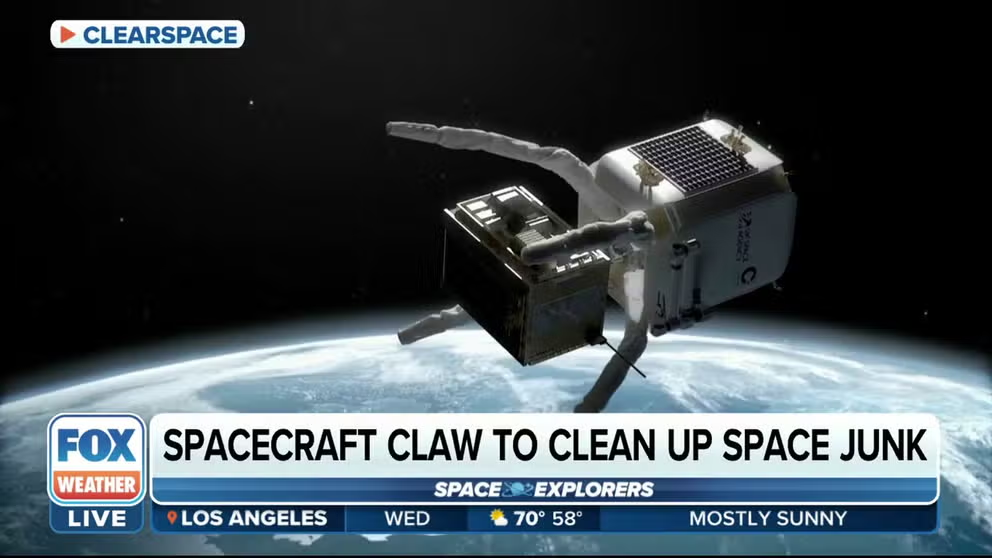Why a spacecraft claw was built to clean up space junk
The first-of-its-kind spacecraft is scheduled to pull chunks of dangerous space junk out of orbit in as little as 3 years.
The claw: Plucking space junk
Scientists designed a spacecraft claw to pluck space junk like broken satellites and jettisoned rockets from the solar system.
Scientists have created a spacecraft to help clean up the cosmos after an overwhelming amount of broken satellites, rocket parts, and other debris litter the final frontier.
The United Kingdom Space Agency (UKSA) commissioned a high-tech claw to clean up space. The spacecraft that looks like a four-fingered robot claw is being designed to pluck the object, piece by piece, out of orbit.
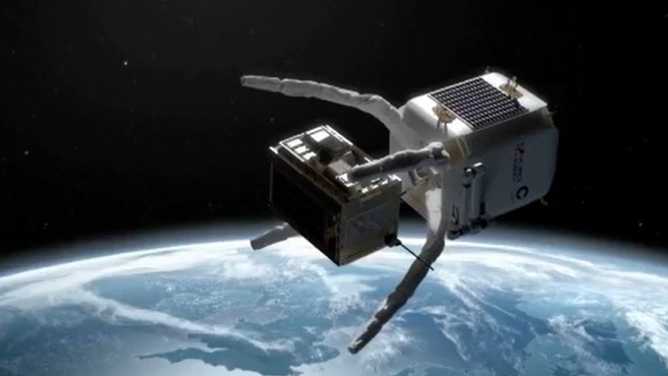
This is a depiction of the claw closing in on a piece of space junk.
(ClearSpace / FOX Weather)
"As our reliance on space technologies increases rapidly … we are committed to leading efforts to make space more sustainable," Paul Bate, Chief Executive of the UKSA said in a news release. "With 1,700 satellites launched last year alone, the need to safeguard the space environment for the benefit of everyone on Earth has never been more pressing."
And it's not just out-of-fuel satellites soaring through space at 17,500 mph threatening. Spent rocket stages, debris from satellite collisions, fragments from countries shooting down satellites and even chips of paint off a rocket can damage a spacecraft.
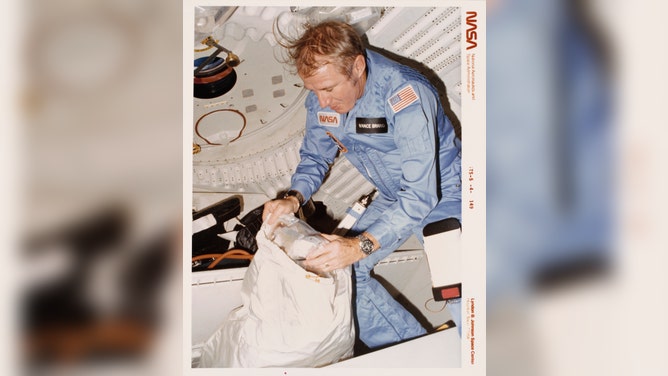
American NASA astronaut Vance Brand disposes of empty food containers and dry trash in jettison bag which eventually became space junk.
(Space Frontiers/Archive Photos/Hulton Archive / FOX Weather)
NASA replaced shuttle windows due to damage from paint flecks, according to its orbital debris website. The agency states that millimeter-sized junk is the greatest mission-ending risk to robotic spacecraft in a low Earth orbit.
In 2009, an abandoned Russian spacecraft hit a U.S. Irridium communication satellite and not only destroyed it, but the collision created 2,300 more large pieces of space junk.

This is space junk on display. The first stage rocket fuel tank fell to the Earth without disintrigrating or burning up in 1998.
(Lawrence K. Ho/Los Angeles Times / Getty Images)
"There are millions of hazardous pieces of space junk orbiting the Earth," Amanda Solloway, British Science Minister, said. "If a single one collides with a satellite, it could interfere with vital everyday services that we all rely on, like broadband or GPS."
The claw’s mission, Clearspace-1, is planned for 2025 or 2026. The pinchers will grasp a 247-pound upper stage of a rocket and ferry it lower to the Earth's atmosphere, where it will burn up. The rocket, launched by the U.K. about 10 years ago, is between 410 and 500 miles above Earth, according to the European Space Agency.
Space debris removal and other in-orbit services, like satellite retrieval and repair, are estimated to be a cumulative $14.3 billion market by 2031, according to analysts.
HOW TO WATCH FOX WEATHER ON TV
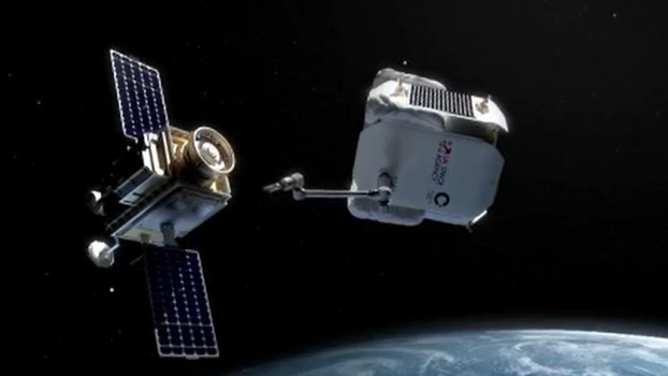
This illustration shows the claw refueling satellite to give it more life.
(ClearSpace / FOX Weather)
"If you think about a car, if it breaks down or runs out of fuel, we do something about it, we fix it, we refuel it, we use it again," Rory Holmes, ClearSpace UK’s lead, told FOX News’ Marianne Rafferty. "In space, we don't do that. We treat satellites as a single-use item."
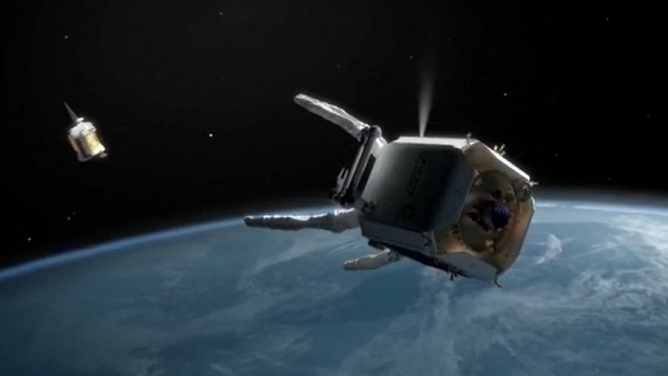
An illustration of the claw headed for space junk.
(ClearSpace / FOX Weather)
ClearSpace UK, a subsidiary of a Swiss company, is designing the claw, while other British companies are developing control systems, cameras and tracking systems.
"We really need to think about how we make sure our space activities are sustainable," Holmes said.
